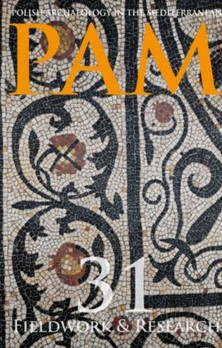The contest scene in EDIII Mesopotamian glyptic art
The contest scene in EDIII Mesopotamian glyptic art
Author(s): Dorota ŁaweckaSubject(s): Archaeology, Cultural history, Visual Arts, History of Art, Prehistory
Published by: Wydawnictwa Uniwersytetu Warszawskiego
Keywords: Early Dynastic period; bull-man; human-headed bull; Utu/Shamash; heroes; Anzu bird; “Star-spade”;
Summary/Abstract: There are four main protagonists in Early Dynastic III contest scenes: two heroes, a bull-man and a human-headed bull. They are usually involved in guarding herbivores against predators. Contrary to common opinion, the protected herbivores are identified apparently as wild rather than domesticated species. The paper explores the role of the depicted beings, the interactions between them, and the secondary motifs that accompany them in the contest scenes. Despite the many composition variants and some intricacies of interpretation, the scene as such is considered consistent and imbued with a deeper mythological meaning, rather than being a purely ornamental arrangement of random decorative elements. The author observes the association between specific participants and certain elements of the contest scene and the god Utu/Shamash or else the mountainous region east of Mesopotamia. In both instances, the association points to the eastern horizon—a liminal location where the Sun-god rises, a region with the symbolism of rebirth bestowed upon it, where fates are determined and judgments passed—which is the setting suggested for the perpetual contest depicted in Mesopotamian glyptic art.
Journal: Polish Archaeology in the Mediterranean
- Issue Year: 1/2022
- Issue No: XXXI
- Page Range: 81-121
- Page Count: 42
- Language: English

